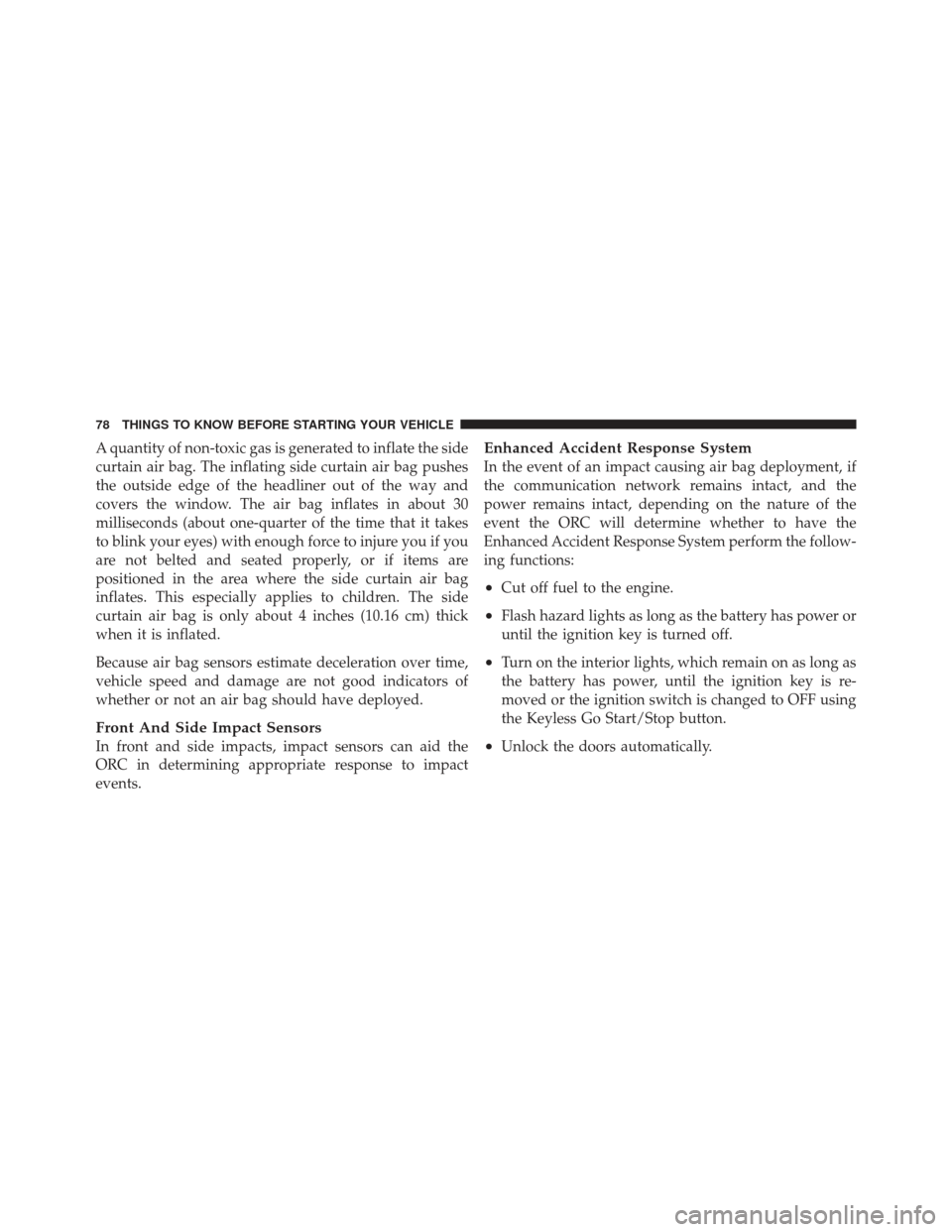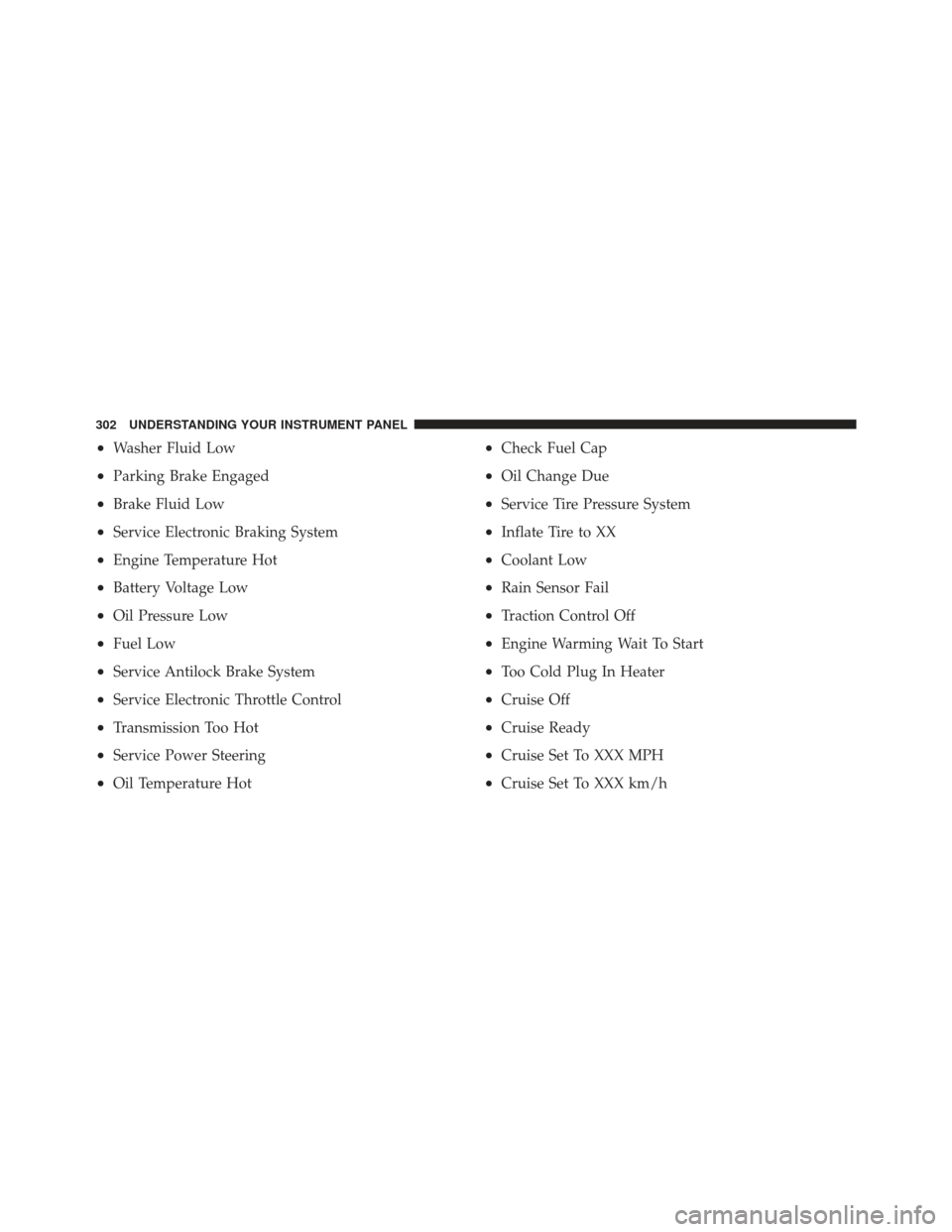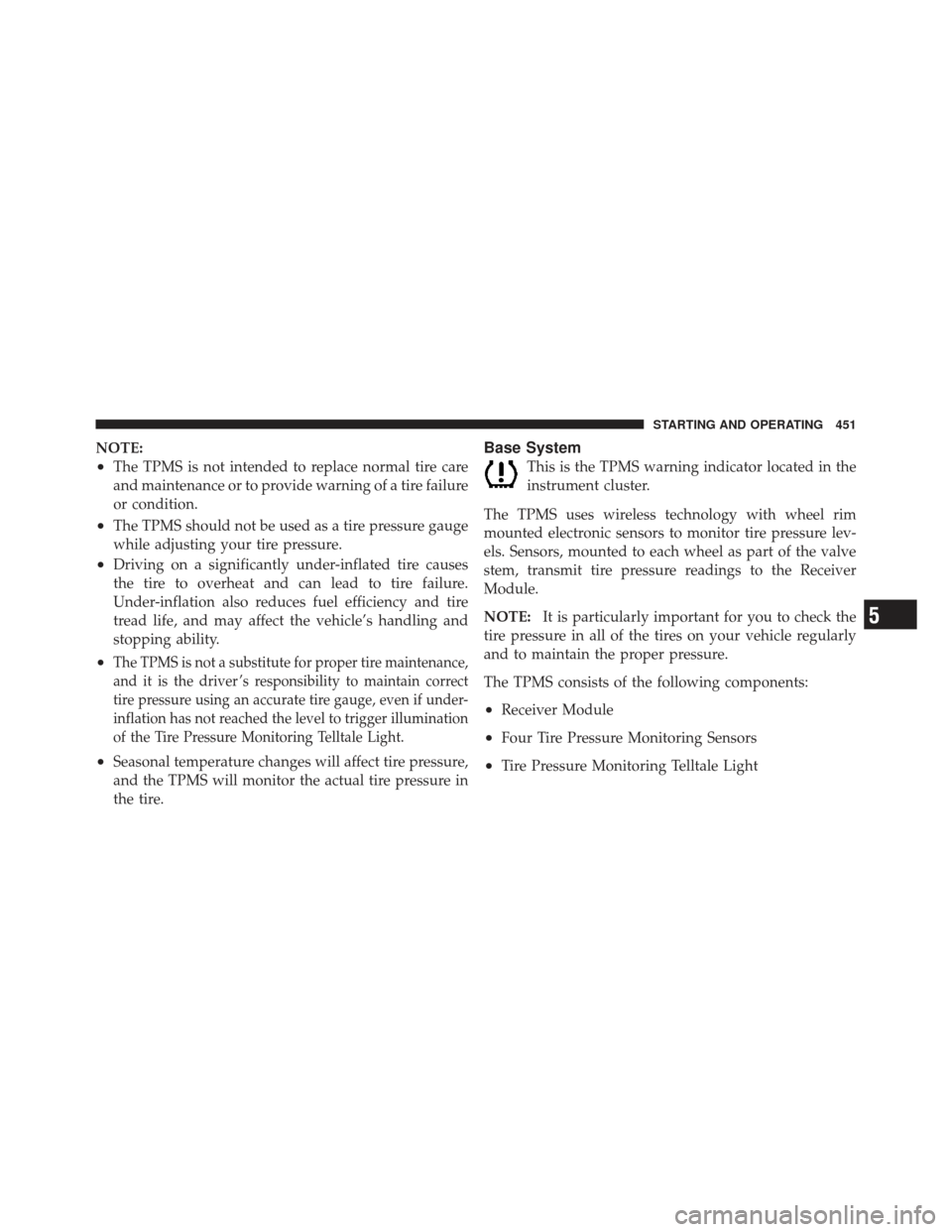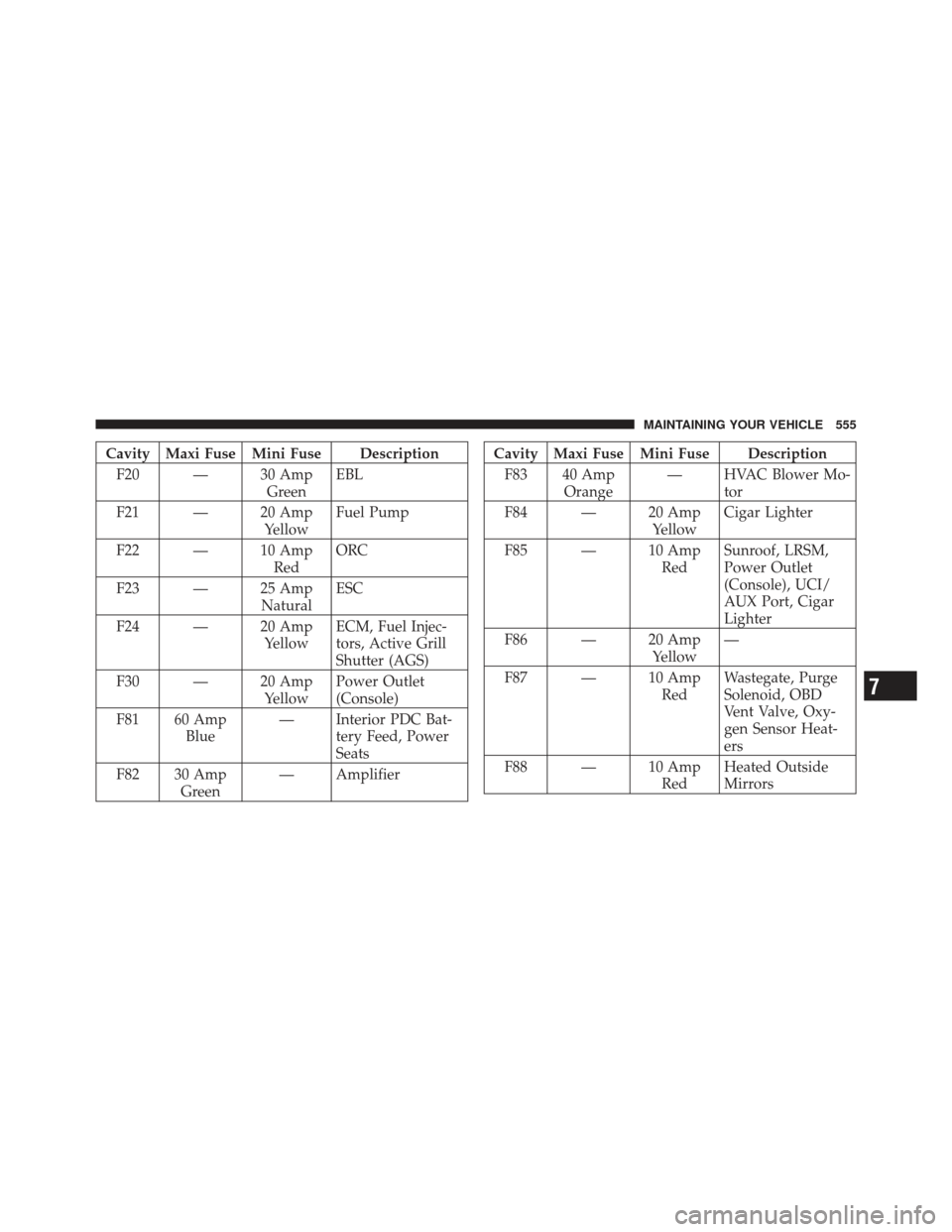fuel sensor DODGE DART 2013 PF / 1.G Owners Manual
[x] Cancel search | Manufacturer: DODGE, Model Year: 2013, Model line: DART, Model: DODGE DART 2013 PF / 1.GPages: 604, PDF Size: 4.72 MB
Page 80 of 604

A quantity of non-toxic gas is generated to inflate the side
curtain air bag. The inflating side curtain air bag pushes
the outside edge of the headliner out of the way and
covers the window. The air bag inflates in about 30
milliseconds (about one-quarter of the time that it takes
to blink your eyes) with enough force to injure you if you
are not belted and seated properly, or if items are
positioned in the area where the side curtain air bag
inflates. This especially applies to children. The side
curtain air bag is only about 4 inches (10.16 cm) thick
when it is inflated.
Because air bag sensors estimate deceleration over time,
vehicle speed and damage are not good indicators of
whether or not an air bag should have deployed.
Front And Side Impact Sensors
In front and side impacts, impact sensors can aid the
ORC in determining appropriate response to impact
events.
Enhanced Accident Response System
In the event of an impact causing air bag deployment, if
the communication network remains intact, and the
power remains intact, depending on the nature of the
event the ORC will determine whether to have the
Enhanced Accident Response System perform the follow-
ing functions:
•Cut off fuel to the engine.
•Flash hazard lights as long as the battery has power or
until the ignition key is turned off.
•Turn on the interior lights, which remain on as long as
the battery has power, until the ignition key is re-
moved or the ignition switch is changed to OFF using
the Keyless Go Start/Stop button.
•Unlock the doors automatically.
78 THINGS TO KNOW BEFORE STARTING YOUR VEHICLE
Page 304 of 604

•Washer Fluid Low
•Parking Brake Engaged
•Brake Fluid Low
•Service Electronic Braking System
•Engine Temperature Hot
•Battery Voltage Low
•Oil Pressure Low
•Fuel Low
•Service Antilock Brake System
•Service Electronic Throttle Control
•Transmission Too Hot
•Service Power Steering
•Oil Temperature Hot
•Check Fuel Cap
•Oil Change Due
•Service Tire Pressure System
•Inflate Tire to XX
•Coolant Low
•Rain Sensor Fail
•Traction Control Off
•Engine Warming Wait To Start
•Too Cold Plug In Heater
•Cruise Off
•Cruise Ready
•Cruise Set To XXX MPH
•Cruise Set To XXX km/h
302 UNDERSTANDING YOUR INSTRUMENT PANEL
Page 453 of 604

NOTE:
•The TPMS is not intended to replace normal tire care
and maintenance or to provide warning of a tire failure
or condition.
•The TPMS should not be used as a tire pressure gauge
while adjusting your tire pressure.
•Driving on a significantly under-inflated tire causes
the tire to overheat and can lead to tire failure.
Under-inflation also reduces fuel efficiency and tire
tread life, and may affect the vehicle’s handling and
stopping ability.
•The TPMS is not a substitute for proper tire maintenance,
and it is the driver ’s responsibility to maintain correct
tire pressure using an accurate tire gauge, even if under-
inflation has not reached the level to trigger illumination
of the Tire Pressure Monitoring Telltale Light.
•Seasonal temperature changes will affect tire pressure,
and the TPMS will monitor the actual tire pressure in
the tire.
Base System
This is the TPMS warning indicator located in the
instrument cluster.
The TPMS uses wireless technology with wheel rim
mounted electronic sensors to monitor tire pressure lev-
els. Sensors, mounted to each wheel as part of the valve
stem, transmit tire pressure readings to the Receiver
Module.
NOTE: It is particularly important for you to check the
tire pressure in all of the tires on your vehicle regularly
and to maintain the proper pressure.
The TPMS consists of the following components:
•Receiver Module
•Four Tire Pressure Monitoring Sensors
•Tire Pressure Monitoring Telltale Light
5
STARTING AND OPERATING 451
Page 554 of 604

Seat Belt Maintenance
Do not bleach, dye or clean the seat belts with chemical
solvents or abrasive cleaners. This will weaken the fabric.
Sun damage can also weaken the fabric.
If the seat belts need cleaning, use a mild soap solution or
lukewarm water. Do not remove the seat belts from the
car to wash them. Dry with a soft cloth.
Replace the seat belts if they appear frayed or worn or if
the buckles do not work properly.
FUSES
Interior Fuses
Cavity CartridgeFuseMini
Fuse Description
F1 — 20 Amp
Yellow Front Heated Seats
F2 — 20 Amp
Yellow
Rear Heated Seats,
Heated Steering Wheel
Cavity Cartridge FuseMini
Fuse Description
F3 — 10 Amp
RedPAM, Rear Camera,
LBSS, RBSS, Com-
pass
F4 — 15 Amp
BlueIPC
F5 — 10 Amp
RedHVAC, Humidity
Sensor, In-Car Tem-
perature Sensor, In-
side Mirror Assem-
bly
F18 — 15 Amp
BlueRadio
F19 — 10 Amp
RedFuel Door
F20 — 10 Amp
RedSCCM, SAS, Switch
Bank
552 MAINTAINING YOUR VEHICLE
Page 557 of 604

Cavity Maxi Fuse Mini Fuse DescriptionF20 — 30 Amp GreenEBL
F21 — 20 Amp YellowFuel Pump
F22 — 10 Amp RedORC
F23 — 25 Amp NaturalESC
F24 — 20 Amp YellowECM, Fuel Injec-
tors, Active Grill
Shutter (AGS)
F30 — 20 Amp YellowPower Outlet
(Console)
F81 60 Amp Blue — Interior PDC Bat-
tery Feed, Power
Seats
F82 30 Amp Green — AmplifierCavity Maxi Fuse Mini Fuse Description
F83 40 Amp Orange — HVAC Blower Mo-
tor
F84 — 20 Amp YellowCigar Lighter
F85 — 10 Amp RedSunroof, LRSM,
Power Outlet
(Console), UCI/
AUX Port, Cigar
Lighter
F86 — 20 Amp Yellow—
F87 — 10 Amp RedWastegate, Purge
Solenoid, OBD
Vent Valve, Oxy-
gen Sensor Heat-
ers
F88 — 10 Amp RedHeated Outside
Mirrors
7
MAINTAINING YOUR VEHICLE 555